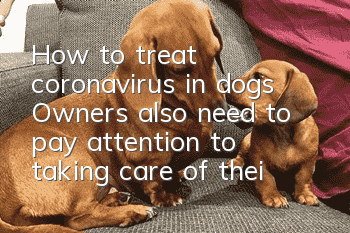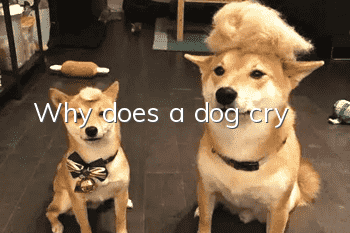How to treat coronavirus in dogs? Owners also need to pay attention to taking care of their dogs!

Introduction to dog coronavirus diseases
Canine coronavirus (CCV) is an enveloped single-stranded RNA virus. The virus is mainly infected through the mouth, invading the villous epithelial cells, causing the villi to become thick and short, causing the dog's digestive enzymes and intestinal absorption function to lose, eventually leading to diarrhea. There have been no reports of viremia and infection of other internal organs in this disease. For dogs, dogs of different breeds, genders and ages can be infected, and puppies are most susceptible to infection because of their poor resistance. The incidence rate is almost 100% and the fatality rate is 50%. Sick dogs and virus-carrying dogs are the main sources of infection. The virus is transmitted to healthy dogs and other susceptible animals through direct and indirect contact through the respiratory and digestive tracts. This disease can occur throughout the year, but is more common in winter. Stress factors such as sudden changes in climate, poor sanitary conditions, high density of dogs, weaning and transfer, and long-distance transportation may all induce this disease.
Symptoms of coronavirus in dogs
The incubation period of the disease is about 1 to 5 days, and the clinical symptoms vary in severity. But generally the symptoms are milder than canine parvovirus infection. Symptoms include depression, not eating, diarrhea after vomiting, porridge-like or watery stools, often yellow-green or orange-red in color, mixed with varying amounts of mucus, and occasionally bloody stools. Condition. Symptoms are intermittent and recurring. The disease is prone to frequent intussusception of the small intestine and enlargement of the spleen. The general course of disease is 7 to 10 days. Some sick dogs, especially puppies, die within 1 to 2 days after onset. Death of adult dogs is rare.
Diagnosis of coronavirus in dogs
According to the local disease epidemic situation, whether there is a coronavirus epidemic.Preliminary identification of clinical characteristics.
Colloidal gold test strips (generally test for parvovirus and coronary virus at the same time)
Treatment of coronavirus in dogs
Intravenous infusion to maintain energy, Correct electrolyte imbalance and improve dehydration.Anti-emetic: metoclopramide, ranitidine
Anti-inflammation and prevention of secondary infection: Sono, Mafu
Most dogs recover after symptom treatment. Conditionally, antiviral treatment can be used in the early stages of infection, such as serum transfusion or immunoglobulin, but the late effects are not significant.
Advice for owners of dog coronavirus
During the illness, you cannot fast due to vomiting and need intravenous infusion. After the condition improves, let him slowly and actively eat someeasily digestible food.
After the dog recovers from the disease, because the intestinal damage still has not fully recovered, it is best to give some intestinal prescription dog food to reduce the burden on the gastrointestinal tract
, but the process of changing should be gradual and not all at once. ; Or add some intestinal probiotics and soak the dog food until it is soft enough to eat.
Don’t keep any other animals at home within half a year, not just dogs but also cats. Because of the dog’s crownThe virus and feline coronavirus
virus have certain homology and may be cross-infected, leading to feline infectious enteritis or even FIP.
You can get vaccinated half a month after recovering from the illness to prevent other viral infections.
- Are dog ears clean or scratched?
- Dog urinates blood but is very active
- How Big Can a Beagle Hound Get?
- Why do dogs often tremble?
- How many grams does a four-month-old Samoyed eat a day? Do you know how much food a dog’s belly can hold?
- Late symptoms of diabetes in old dogs. Proper care and feeding. Take more care of your dog.
- Can dogs always eat prescription food? Dogs that are not chronically ill...
- What is the market price of Border Collies? What factors affect price?
- Can dog burns heal on their own?
- Will a dog heal on its own if it vomits yellow water after eating bones?



